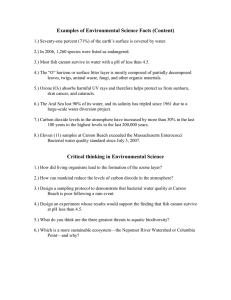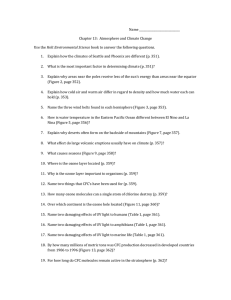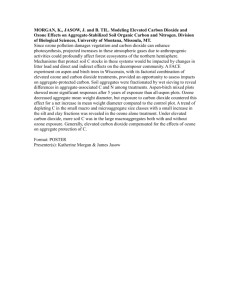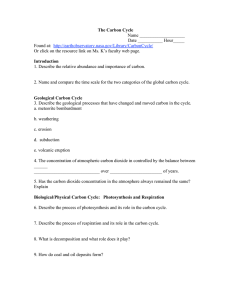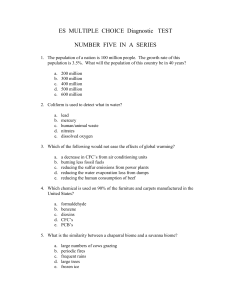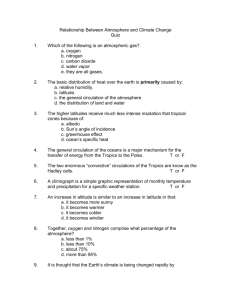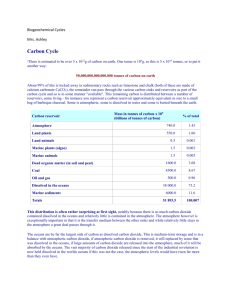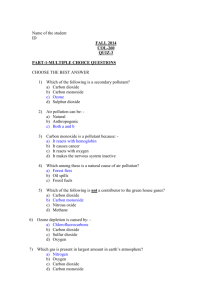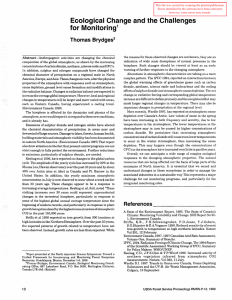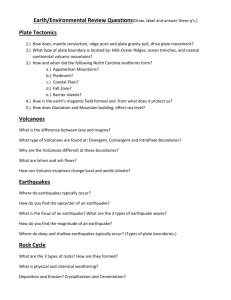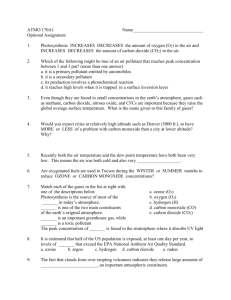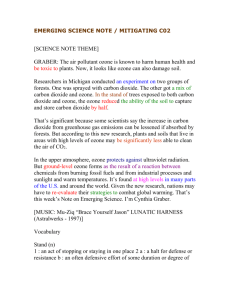Name: ______ Date:______ Period:______ Water and
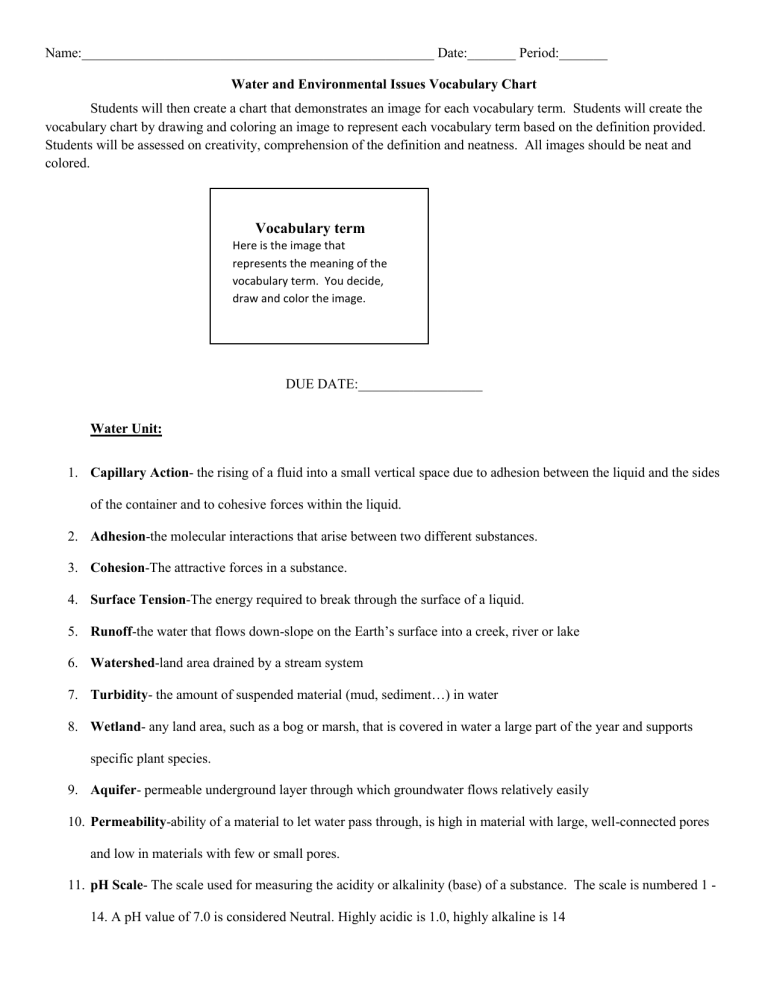
Name:___________________________________________________ Date:_______ Period:_______
Water and Environmental Issues Vocabulary Chart
Students will then create a chart that demonstrates an image for each vocabulary term. Students will create the vocabulary chart by drawing and coloring an image to represent each vocabulary term based on the definition provided.
Students will be assessed on creativity, comprehension of the definition and neatness. All images should be neat and colored.
Vocabulary term
Here is the image that represents the meaning of the vocabulary term. You decide, draw and color the image.
DUE DATE:__________________
Water Unit:
1.
Capillary Action - the rising of a fluid into a small vertical space due to adhesion between the liquid and the sides of the container and to cohesive forces within the liquid.
2.
Adhesion -the molecular interactions that arise between two different substances.
3.
Cohesion -The attractive forces in a substance.
4.
Surface Tension -The energy required to break through the surface of a liquid.
5.
Runoff -the water that flows down-slope on the Earth’s surface into a creek, river or lake
6.
Watershed -land area drained by a stream system
7.
Turbidity - the amount of suspended material (mud, sediment…) in water
8.
Wetland - any land area, such as a bog or marsh, that is covered in water a large part of the year and supports specific plant species.
9.
Aquifer - permeable underground layer through which groundwater flows relatively easily
10.
Permeability -ability of a material to let water pass through, is high in material with large, well-connected pores and low in materials with few or small pores.
11.
pH Scale The scale used for measuring the acidity or alkalinity (base) of a substance. The scale is numbered 1 -
14. A pH value of 7.0 is considered Neutral. Highly acidic is 1.0, highly alkaline is 14
12.
Polarity -compounds that have both partially positive and negative charges. Allows for water to bond easily with other substances.
13.
Solute- a substance that dissolves in water.
14.
Solvent- a substance that dissolves the solid, water is known as the universal solvent.
Environmental Issues:
15.
Point Source Pollutants contaminates that are discharged or emitted from an identifiable source, such as, factories, agricultural sites and constructions sites.
16.
Non Point Source Pollutants pollutes carried far from the original, unidentifiable source, such as, runoff from highways, trash/litter, runoff from development areas and cities.
17.
Greenhouse Effect the natural process in which heat is trapped near the Earth’s surface and cannot escape back to space. The heat is trapped but greenhouse gases such as carbon dioxide, methane and nitrous oxide.
18.
Global Warming an unnatural warming of the AVERAGE temperature on the Earth’s surface, most impacts are first experienced at the poles then lead to climatic devastations such as tornadoes, hurricanes, droughts, death/disease to marine life and rising sea levels.
19.
Acid Deposition any precipitation with a pH of less than 5.0 that forms when sulfur dioxide and nitrogen oxides combine with moisture in the atmosphere to produce sulfuric acid and nitric acid.
20.
Eutrophication a result of pollution where an algae bloom becomes too large and blocks sunlight from traveling within the body of water causing larger species of plants and animals to die.
21.
Bioaccumulation is the absorption of a toxic substance up the food chain by transfer of residues of the dangerous substances, such as mercury and DDT (pesticide) in smaller organisms that are food for larger organisms in the chain. The larger species will have more accumulation and affects due to eating many of the smaller infected species.
22.
Ozone depletion
a seasonal decrease of ozone in the ozone layer over the Earth’s polar regions due to the release of too much chlorine and fluorine atoms from human processes such as aerosol cans and air conditioners.
23.
Photochemical smog - a type of air pollution, a yellow-brown haze formed mainly from automobile exhaust in the presence of sunlight.
24.
Dead zone - an area or entire body of water that is so deprived of oxygen that nothing will grow.
25.
Leachate - a highly toxic sludge produced and leaked from landfills as waste decomposes.
26.
Geosphere -the part of Earth from its surface to its center
27.
Atmosphere - the gases that surround the earth.
28.
Ecospher e-the biochemical cycling of essential elements on Earth such as oxygen, nitrogen, phosphorus and carbon, all of which are essential for maintaining life on earth.
29.
Biosphere -all of Earth’s plants and animals as well as the environment in which they live
30.
Hydrosphere - all the water in Earth’s oceans, lakes, seas, rivers and glaciers plus all the water in the atmosphere.
31.
Deforestation - the distinct removal of trees through deliberate slashing and burning or from direct removal for logging, development or agriculture.
32.
Carbon sink - the absorption of EXCESS carbon dioxide by the earth’s oceans due to the excessive increase in carbon dioxide from the burning of fossil fuels that is causing our oceans to become more acidic (pH below 6.5).
33.
Sustainabilityliving within the bounds of nature based on renewable resources used in ways that don’t deplete nonrenewable resources, harm essential ecological services or limit the future generations.
34.
Ecological footprint- the impact, per person or household, on the environment and its resources .
35.
“Going Green”-
the catch-phrase coined to making smarter choices everyday to create more sustainability in the future. Choices may include; using recycled materials, doing more than recycling but reusing such as bags and water containers, reducing water, electrical, pesticide/fertilizers and gasoline usage and viewing the world in a more positive and respectful way.
